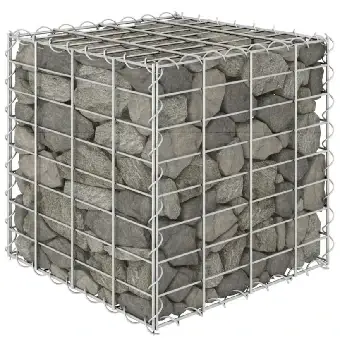Nov . 01, 2024 05:59 Back to list
Optimal Reinforcement Mesh for Concrete Structures and Enhanced Durability Performance
The Best Reinforcement Concrete Mesh Enhancing Structural Integrity
In the realm of modern construction, the use of reinforcement concrete mesh has become indispensable for ensuring the durability and strength of various structures. As buildings and infrastructures face increasing demands, selecting the best reinforcement concrete mesh is crucial for optimizing structural integrity and safety.
Understanding Reinforcement Concrete Mesh
Reinforcement concrete mesh, commonly referred to as welded wire mesh or rebar mesh, consists of a series of steel wires that are welded together at specified intervals to create a grid-like structure. This mesh serves as a critical component in concrete applications, as it enhances tensile strength and prevents cracking. Concrete, while strong in compression, can be weak in tension. Thus, integrating a robust reinforcement mesh helps balance these properties, providing enhanced performance under load.
Types of Reinforcement Concrete Mesh
There are various types of reinforcement meshes available, each suited for specific applications. The most common types include
1. Welded Wire Fabric (WWF) This type of mesh is made by welding perpendicular wires to create a grid. It is widely used in slabs, walls, and pavements due to its ease of placement and strong bonding with concrete.
3. Fiberglass Mesh An alternative to steel mesh, fiberglass mesh offers corrosion resistance and is lightweight, making it suitable for specific applications like stucco, plastering, and thin concrete overlays.
best reinforcement concrete mesh

Choosing the Best Reinforcement Concrete Mesh
When selecting the best reinforcement concrete mesh, several factors must be considered
1. Load Requirements The mesh's tensile strength should match the structural requirements of the project. Understanding the load paths and expected stresses is essential for proper selection.
2. Material Quality High-quality steel complying with industry standards ensures the mesh can withstand environmental challenges and maintain structural integrity over time.
3. Mesh Size and Spacing The size and spacing of the wires in the mesh affect its overall strength and flexibility. For instance, denser mesh can provide better resistance to cracking in high-stress areas.
4. Environmental Considerations In environments prone to corrosion, selecting materials that offer protection, such as coated or galvanized meshes, can extend the lifespan of the structure.
5. Project Specifications Each construction project has unique needs based on design, climate, and use. Consulting with structural engineers and adhering to local building codes is paramount to ensure the appropriate type of mesh is utilized.
Conclusion
The best reinforcement concrete mesh is not a one-size-fits-all solution; rather, it is an integral part of the construction process that requires careful consideration of various factors to ensure optimal performance. By choosing the right type of reinforcement mesh, builders and engineers can significantly enhance the durability and safety of structures. As construction technology evolves, continued innovation in reinforcement methods will undoubtedly lead to even stronger and more resilient infrastructures, paving the way for a safer future. Whether constructing residential homes or large-scale commercial buildings, investing in quality reinforcement concrete mesh is a critical step in achieving lasting structural integrity.
-
Hop Dipped Galvanized/PVC Coated Temporary Fence - Anping County Xingzhi Metal Wiremesh Products Co., Ltd.|Temporary Fencing Solutions, Durable Security Products
NewsJul.30,2025
-
Hop Dipped Galvanized/PVC Coated Temporary Fence-Anping Xingzhi|Durability&Cost-Effective
NewsJul.30,2025
-
Hop-Dipped Galvanized PVC Fence - Anping Xingzhi | Durable, Quick Deployment
NewsJul.30,2025
-
Hop Dipped Galvanized/PVC Coated Temporary Fence - Anping County Xingzhi|Temporary Fencing, Durable Security, Customization
NewsJul.30,2025
-
Hop Dipped Galvanized PVC Coated Temporary Fences - Anping County Xingzhi|Durable Corrosion Resistance, Quick Installation
NewsJul.30,2025
-
Hop Dipped Galvanized / PVC Coated Temporary Fence - Anping County Xingzhi Metal Wiremesh Products Co., Ltd|Durable Temporary Fencing&Versatile Applications
NewsJul.30,2025



